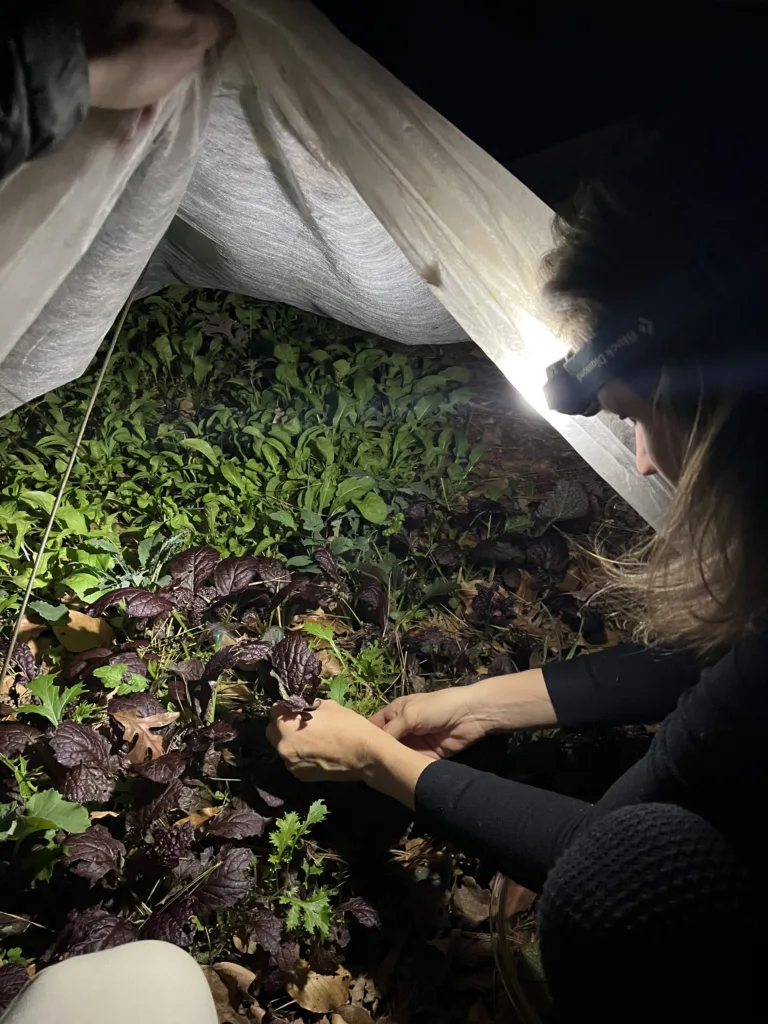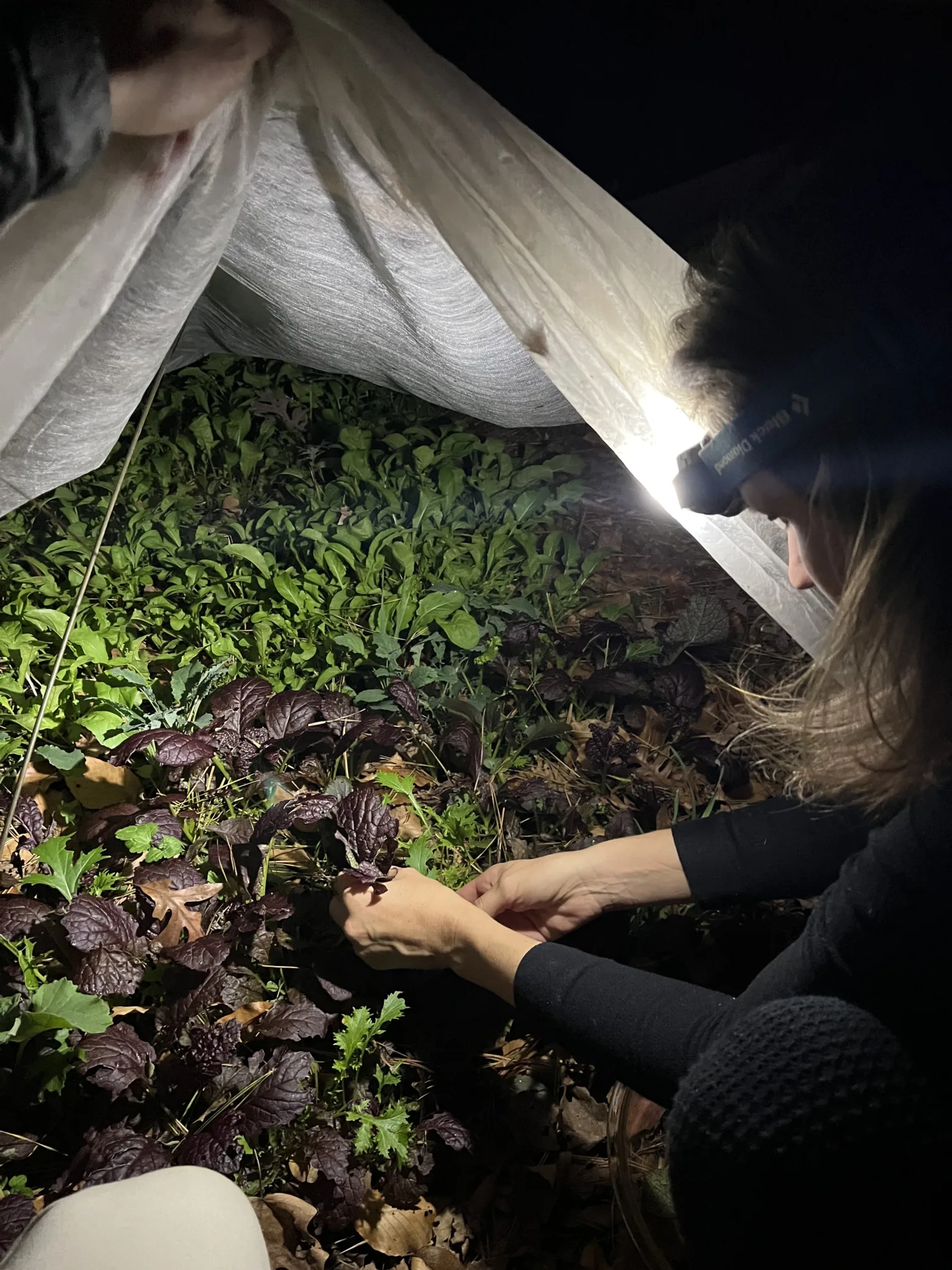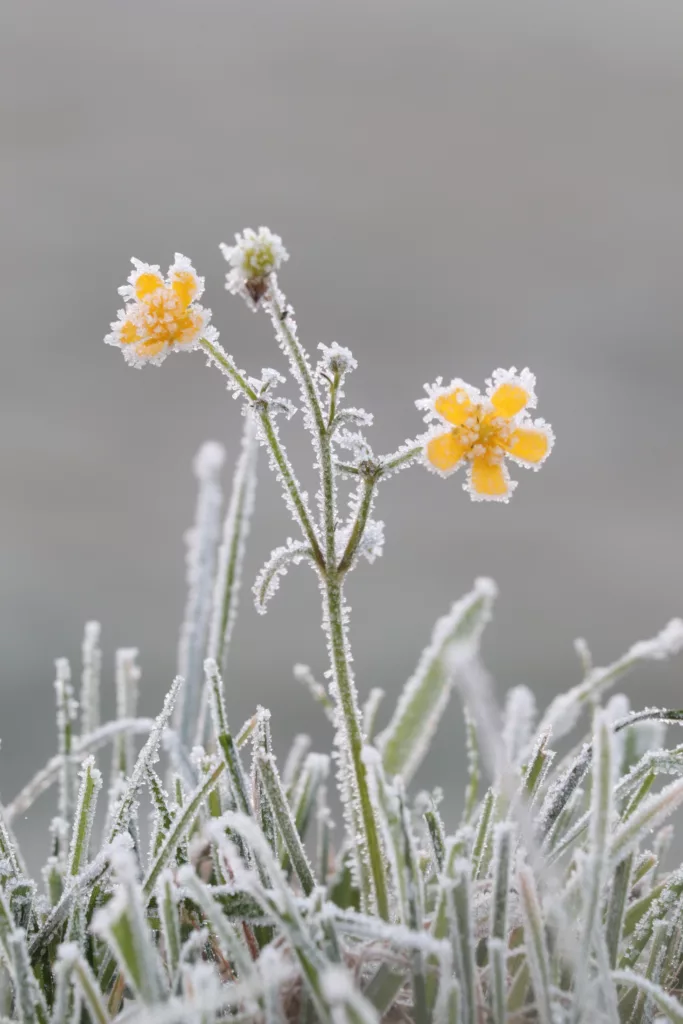
In the southeastern US, the fall garden is an absolute pleasure. There are less weeds and less pests to deal with. And who doesn’t like cooler weather in the garden, especially after the hot and humid summers of the south. With a little care and preparation, the fall garden will last well into spring the following year.
Frost vs. Freeze
For USDA Plant Hardiness Zones 6-8, the first frost will normally appear sometime in October and November. (To find out what zone you are in, visit https://planthardiness.ars.usda.gov/ ). Every region has two “Frost Dates”. These dates help gardeners know when to expect the first and last frost of the season. Below is a general guide for determining what your Frost Date is in the Fall.
Zone 6 – October 1-14
Zone 7 – October 15 – 31
Zone 8 – November 1 – 15
Frost occurs in the garden when the surface of our plants cools past the dew point and the water vapor in the air turns to water and then the air temperature drops enough to freeze that liquid leaving behind little bits of ice, or frost, on the plant. Majority of the plants in your fall garden will be frost hardy – meaning they can take a light frost. However, it is still a good idea to protect your garden as most of your plants in October will still be growing and immature.
A freeze is different from a frost in that it’s when the liquid inside the plant freezes. Few garden plants can withstand a freeze although every year I’m surprised at how resilient the garden is in the winter. A little support during freezing nights goes a long way to preserve your harvest!
Preparing for the Winter
The best time to prepare for the freezing nights that will inevitably come is well before they are forecasted. Below are a few simple ways to protect your garden during these freezing nights.
Mulch
The average temperature of the earth is around 55 degrees fahrenheit. Mulching in your garden helps insulate the soil and hold its warmth. It also insulates your plants and can be used to cover vulnerable, smaller plants during freezing nights. Ue mulch to cover your root vegetables such as carrots, radishes, and beets during the colder nights of fall and winter.
Fallen leaves make an excellent mulch and provide multiple benefits in addition to cold protection. The fall season is the time to collect leaves for use as mulch in your garden.
Floating Row Covers | Frost Cloths
Floating row covers are lightweight fabrics that can be placed over your garden plants to protect against frost and provide extra insulation on freezing nights and days. They come in different weights and provide varied protection based on thickness. These covers allow moisture and light in and can be left covering plants for extended periods of time. One consideration is wind. Ensure the sides are weighted down to prevent wind from blowing covers off of plants and leaving them exposed. During the coldest nights I will double up with the covers to provide extra insulation. We have had great success, even with temperatures into the teens.
Here is a link to a floating row cover from a great company: https://www.farmersfriend.com/products/crop-protection/floating-row-cover


